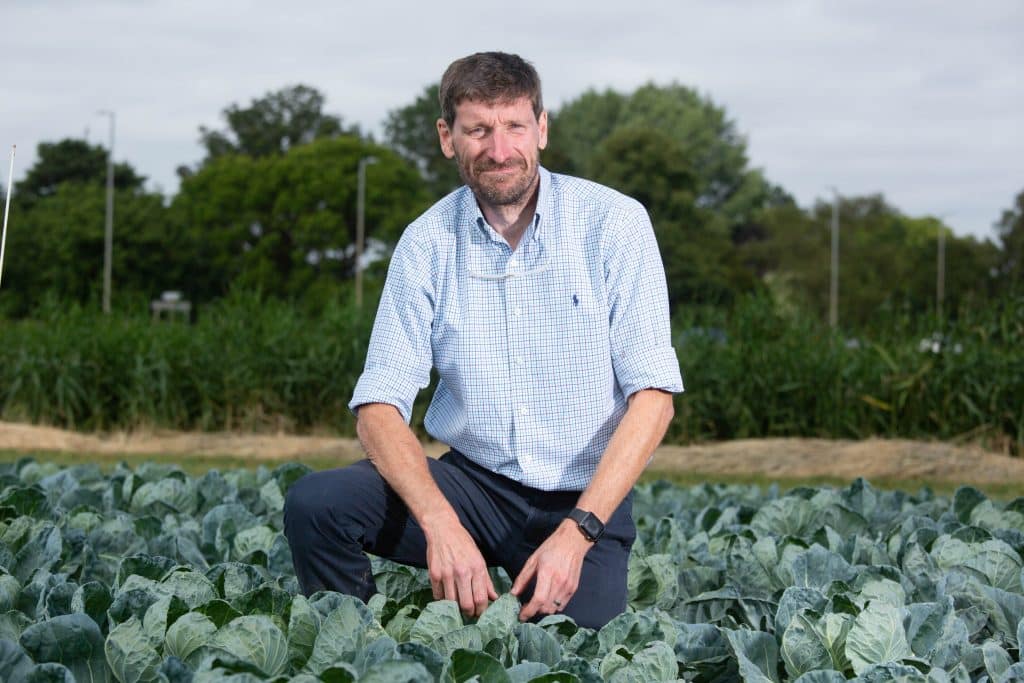Reasonable season for most crops following wet winter – The Vegetable Farmer
There's no doubt that the last 18 months have produced some of the most challenging weather conditions UK vegetable growers have ever faced ...
Not only did extremely wet weather limit last year’s harvests of many crops, while the weather through the spring and early summer delayed crop establishment and growth.
Despite the problems, overall crops appear to have fared better than many expected. Towards the end of July, harvesting of crops such as vining peas, salads, carrots, onions and brassicas got underway, and we asked three leading agronomists for their thoughts on the season so far.
“Obviously, the big story is the incredibly wet winter and spring which set us back considerably in terms of getting crops into the ground,” commented Andy Richardson of Allium & Brassica Agronomy. “So generally speaking, soil conditions were pretty horrible for planting/drilling through March into April but reasonable levels of rainfall up until mid-June kept crops growing pretty strongly. Impaired rooting due to compaction/slumped soils only really started to show in onion/brassica crops at the end of June after a month or so with little rain”
The harvesting on overwintered drilled crops began in mid-June, followed by overwintered sets in early July, and spring-planted sets in mid- July, timings which were all similar to what would be expected in a normal season. “With set crops we are expecting reasonable yields, as unirrigated crops received rain at the right time, so I think yields will be relatively high at around 50- 55t/ha,” he continued.
“Many spring-drilled crops went into some really horrible soil conditions in February and March, and we were still drilling up to 25 April, which is almost a month later than we would like. That means there is huge variation in crop growth stage across the drilled crop, anywhere from four-leaves to nine-leaves as of 4 July, and there are some big areas of fields that sat wet and won’t produce any crop.” As a result, he suggests that drilled yields will be slightly lower than average at around 43t/ha due to late drilling, compacted headlands and wet holes.
“It’s also been a pretty tough year for insect pests in onions,” he continued. Following the loss of Force seed treatment (tefluthrin) last year, an emergency approval was granted but only at around half the rate previously used, while the mild winter created high pressure from pests, particularly bean seed fly. “Typically, it’s a problem we see in Norfolk, Suffolk and Essex,” said Andy. “This year we’ve seen significant levels in Bedford and Cambridgeshire and up as far north as Nottinghamshire.
“The pressure has been immense, and I think we’ve lost up to 12 per cent of the drilled crop due to bean seed fly. Given the dull, damp weather in June. and early July it is no surprise that downy mildew is another issue that has challenged growers this year, with the situation exacerbated for some growers due to restricted availability of some fungicides.”
In contrast most leek crops have performed well, with the bulk now grown from transplants. “Crops went in a little later than normal, but the cooler, wetter weather suits leeks and brassicas, so we’ve had decent growth in both, although continuity in brassica production has been a challenge,” he added. “We had large numbers of aphids on brassicas in early to mid-May along with an influx of Diamond Back and Silver-Y moths. However, the cooler, wetter weather in mid-May through June means we haven’t seen too many pest issues, so we’ve hardly needed to spray for pests, although the warm weather at the end of June saw an increase in aphid and caterpillar numbers.”
Whilst March/early April planted crops of cauliflower and broccoli for harvest in June and early July were pretty variable and yields were down, late spring and early summer planted crops have generally established and grown well and quality and yields are expected to be good. Planting was in full swing in July for autumn and winter production and conditions from then onwards will determine the quality and yield for crops harvested from October to May.
